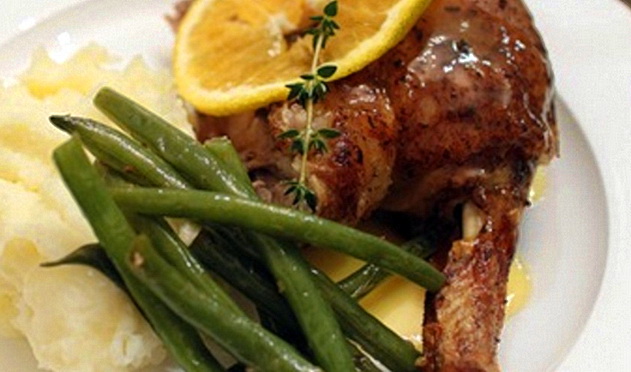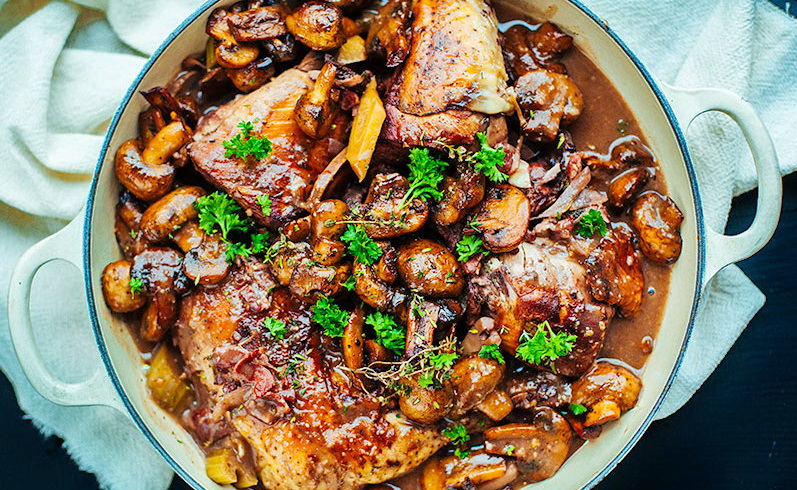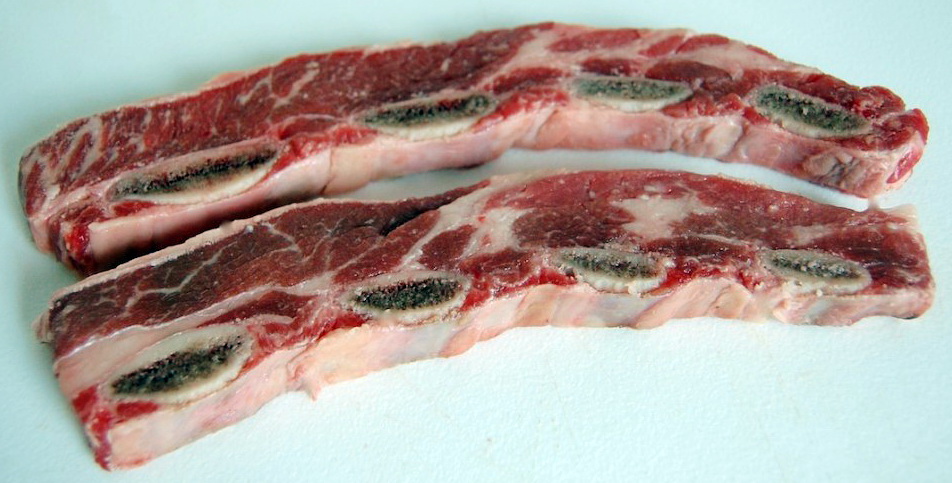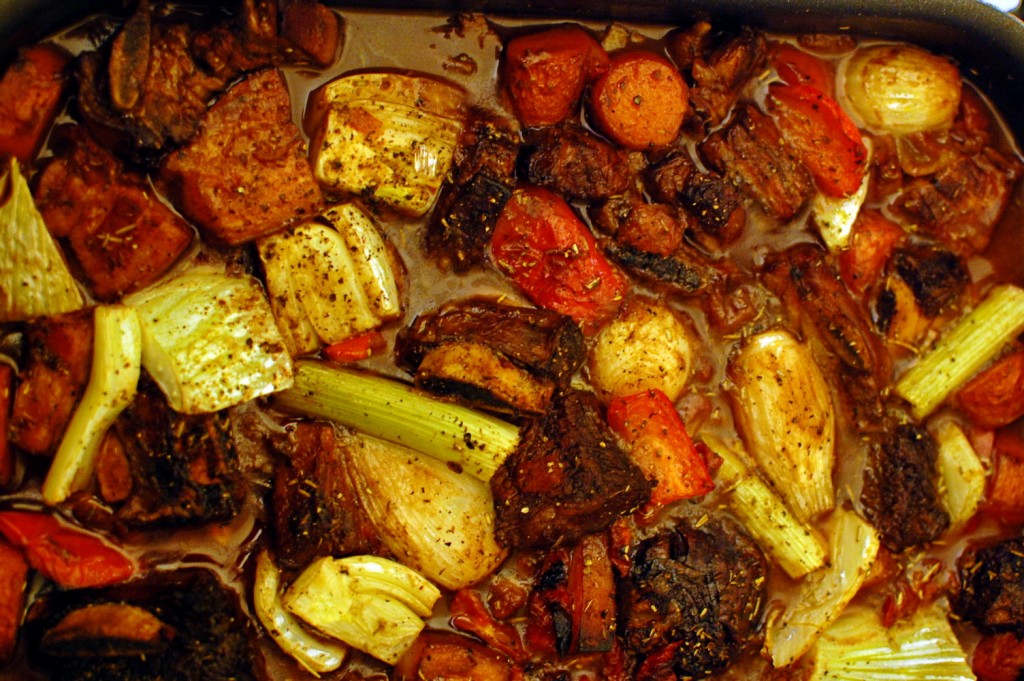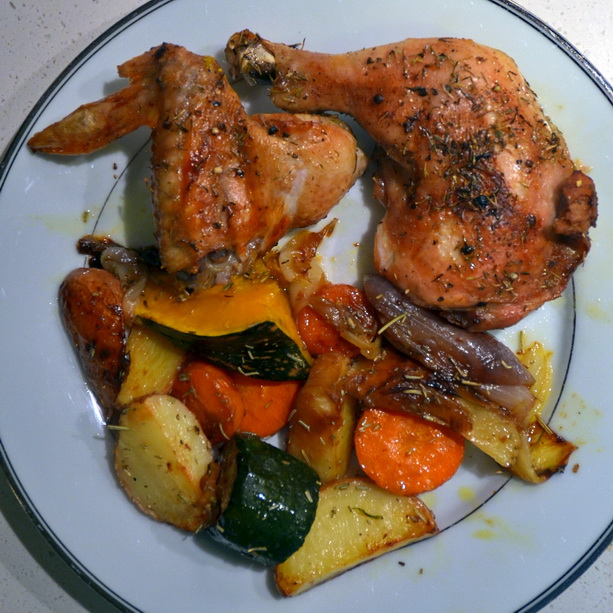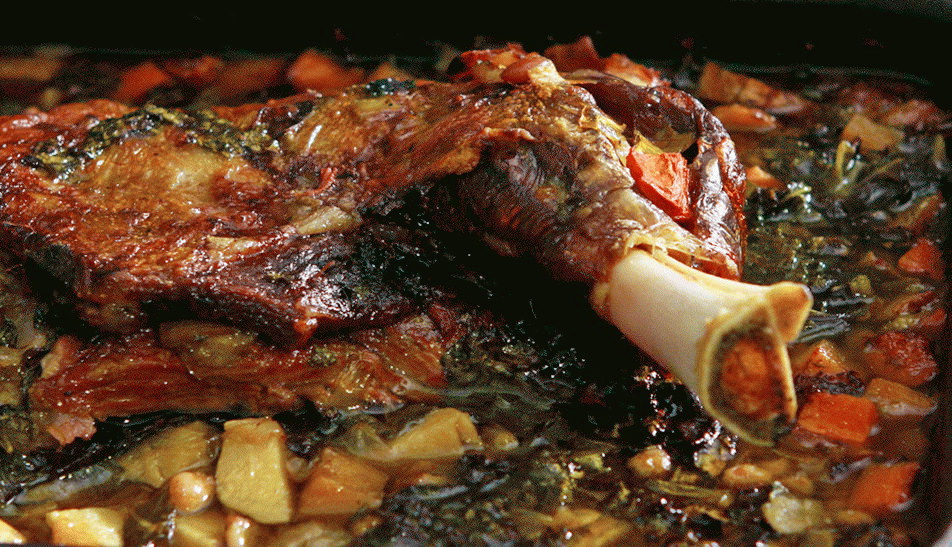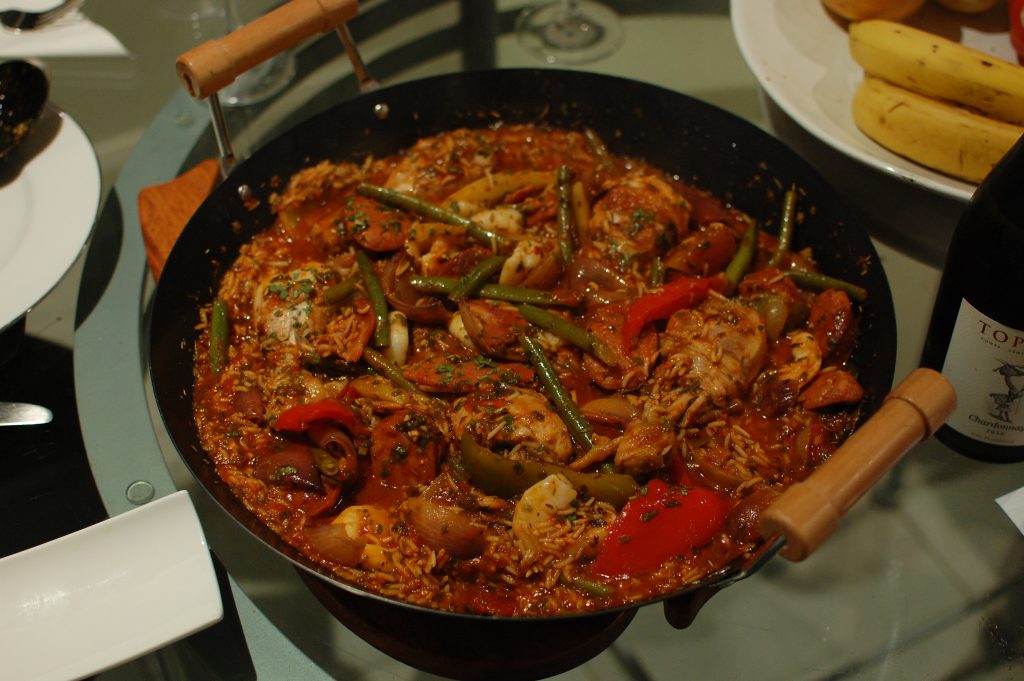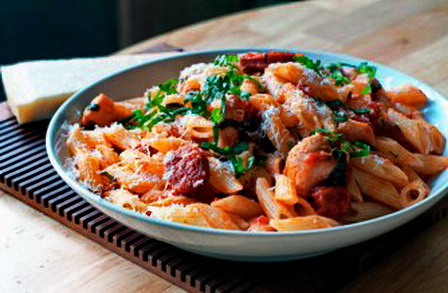I saw the pork neck on special at the local butcher’s, and it got my creative juices going. Make sure there’s enough fat in the neck – there usually is but I ended up with a fairly lean neck. You can also use pork belly with this recipe; simply reduce the cooking time by one third (an hour roughly).
I’ve found it hard to get rich flavours out of pork dishes, so I tried an Asian twist with apple cider and ginger. Like all casseroles, you can taste and adjust various elements as the dish cooks slowly. It should have a rich, exotic impact, but it should not be simply sweet. The dry white should provide the balance.
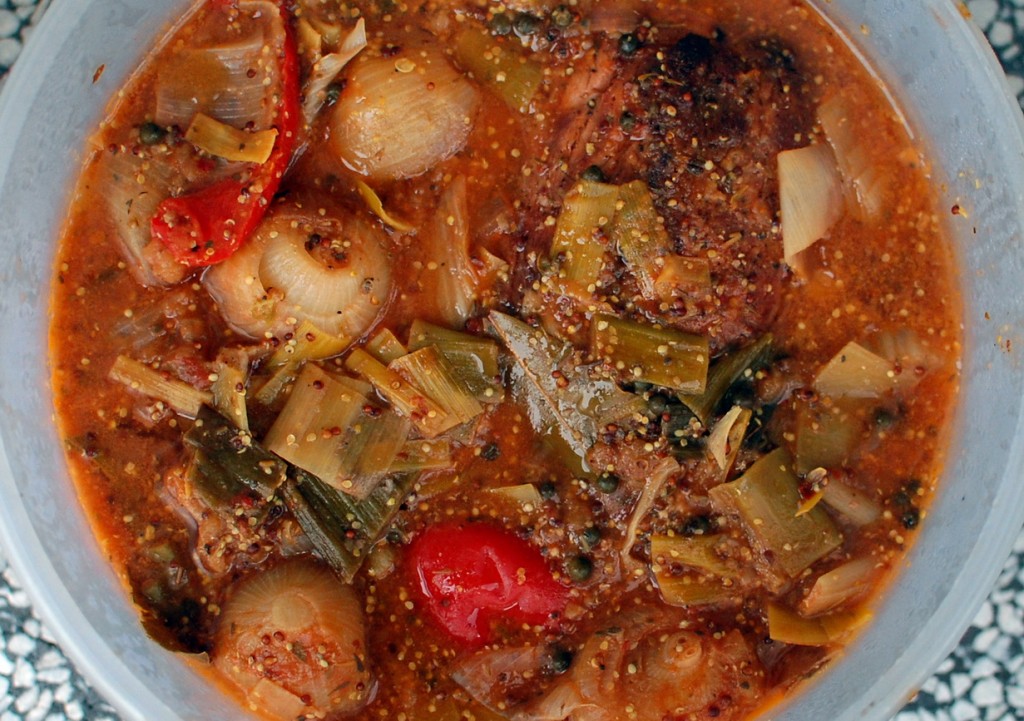 As usual I got too involved in the process to remember the photo. This one is straight from the fridge, the pork is buried underneath
As usual I got too involved in the process to remember the photo. This one is straight from the fridge, the pork is buried underneath
It’s the usual routine, not as arduous as it looks:
- Brown the pork on both sides in a big frypan (use olive oil or similar), after you’ve sprinkled a tablespoon of flour on each side plus seasoning.
- Move to a casserole dish, pour in the cider and the wine, add the onions and cook for an hour 30 minutes at 150 degrees. Check halfway through the first stage, and turn the neck over. The top half should be roasting, the bottom half broiling. Adjust liquid if necessary by adding chicken stock.
(Allow 3 hours total cooking time for a big neck, two for a belly. The times I list here are for the neck, simply reduce by one-third if you’re cooking pork belly).
- After 1 hour 30 minutes,
- add all the veggies, chopped into biggish chunks.
- add stock if needed
- add tomato paste, ginger, mustard and Sacla Sauce (see below)
- add balsamic, bay leaves and lemon rind
- Taste and adjust seasoning, mustard, stock , stir the liquid and turn over the meat, return to the oven.
- Half an hour before the finish, add sage and thyme, check taste and liquid again – the liquid should not be thick, but should not be as thin as soup either. Aim for somewhere in between.
- Serve with rice, potatoes or noodles.
INGREDIENTS – this looks like a lot but it isn’t really
- Pork neck / belly – 1.5 – 2kg / 1- 1.3 kg – give or take
- Two heaped tablespoons of flour
- 7 – 10 spring or pickling onions
- 1 leek
- 3 fennel roots
- 2 small red capsicums or 4 red peppers
- 1 zucchini chopped into slices
- 375ml of apple cider (alcoholic, dry)
- Half a bottle of dry white wine
- 1- 2 cups of chicken stock (adjust as needed)
- Seasoning
- 2 teaspoons of sage (fresh or dried leaves)
- Teaspoon of thyme
- 3 bay leaves
- 1 teaspoon of grated ginger root
- 3 tablespoons of grain mustard (mild)
- 4 tablespoons of SACLA capsicum & eggplant stir-through
- Small tin of tomato paste
- Tablespoon of balsamic reduction / vinegar
- Grated lemon rind
Serve with a big old Riesling or big Pinot Gris or a rich, buttery Chardonnay. Try a light, sweet fruit Pinot Noir if you’re game.

